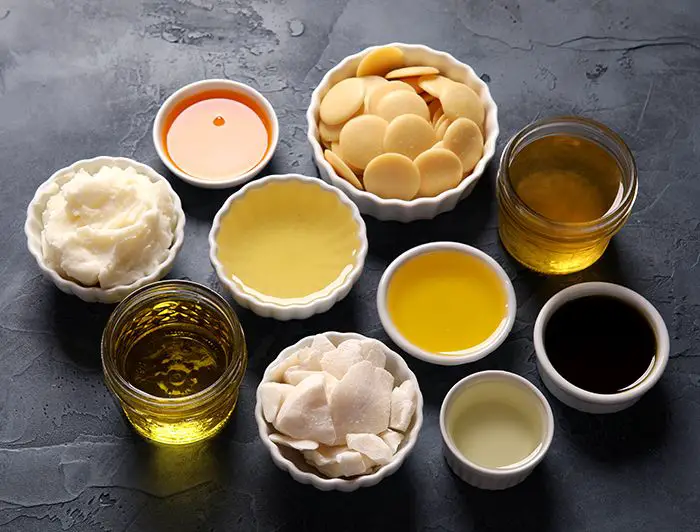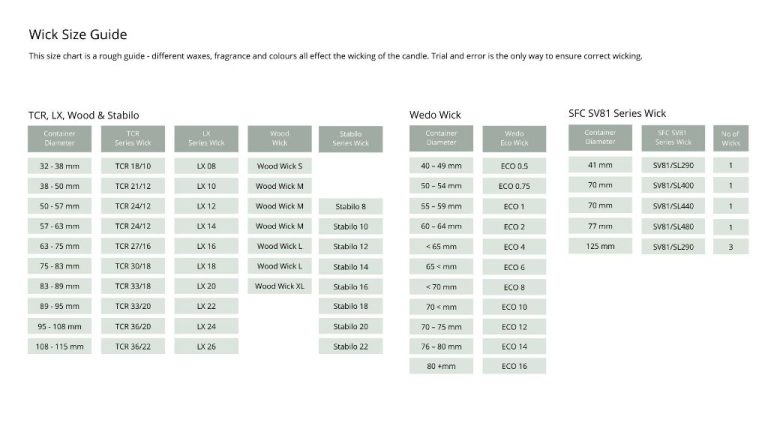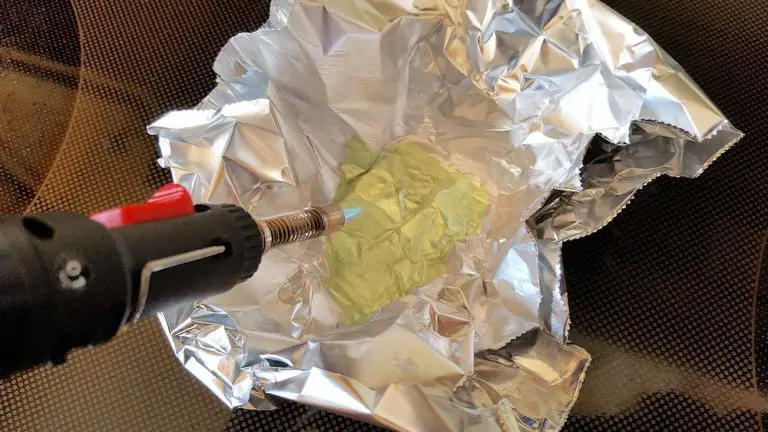How Many Candles Do I Need To Start A Business?
Turn Your Passion for Fragrance into a Thriving Business
From large manufacturers to home-based hobbyists, the candle-making industry continues to see rapid growth and opportunity. With the global candle market size projected to reach $10.30 billion by 2030 according to Candle Market Size, Share & Trends Analysis Report, many entrepreneurs are looking to capitalize on this trend by starting their own candle brand.
In this comprehensive guide, we’ll walk through everything you need to know to launch a successful candle business. You’ll learn tips on developing captivating fragrances, establishing branding, calculating startup costs, marketing your products, managing operations, and more. Whether you’re an aspiring first-time founder or an experienced candle maker looking to grow, you’ll find actionable steps to turn your candle-making passion into a thriving business.
Assessing Demand
Researching consumer demand for candles in your local area is an important first step when starting a candle business. Look at market reports to get a sense of broader industry trends. The global candle market size was valued at USD 12.88 billion in 2022 and is expected to grow at a 5.7% compound annual rate through 2030, according to Grand View Research [1]. Zooming in on your specific region can reveal untapped opportunities.
Consider surveying potential customers in your area to gauge interest and see what kinds of candles they currently buy. Get a sense of pricing, fragrance preferences, purchasing habits and more. Drive around to assess the competition and see what type of candle shops already exist. Researching the competitive landscape will help position your business.
Looking at market trends can reveal growing demand for certain candle styles, like container candles vs. pillars or tapers. Scented candles are driving overall market growth, expected to expand at a 4.1% CAGR through 2030 [2]. Identify rising fragrance trends that you can capitalize on in your area.
Estimating Startup Costs
Starting a candle business requires some initial investments. According to Starter Story, the average startup costs for a candle business range from $9,500 to $78,000, with most falling around $44,000. The main costs include:
Equipment such as wax melters, molds, wicks, thermometers, pouring pots, and label printers. Expect to spend a few thousand dollars to get quality equipment.
Raw materials like wax, fragrance oils, dyes, and wick. Bulk purchases can lower material costs. According to Candle Business Boss, materials may cost $2-5 per candle.
Packaging like jars, lids, boxes, bags, and labels. Going with simple packaging helps control costs.
Rent for production and storage space, which can range from $500 to over $2000 per month depending on size and location.
Other overhead like insurance, licensing, accounting, legal, advertising, and utilities.
Starting small and outsourcing production at first allows testing with lower startup costs. As sales grow, bringing production in-house can increase profit margins.
Scaling Production
When starting a candle business, it’s wise to begin small and scale up production gradually as demand grows. This allows you to keep costs low while testing the market and refining your products. According to CandleScience, “Scaling up productions means you need to adapt wax and fragrance quantities to meet the new batch size.”
For example, if your initial test batches make one candle with 6 oz of wax, you’ll need to multiply the ingredient amounts accordingly to produce larger batches. A Reddit user asked how people have scaled up from small test batches to larger production runs: “Currently I can make about 6 medium jars in my kitchen. I’m wondering how I should scale up…”
An experienced candle manufacturer like CandleScience can help you quickly scale up production while maintaining quality. As Karl Winters advises, “An experienced candle manufacturer can scale production in a very short period, with no impact to product quality.” This allows you to ramp up candle production to meet growing demand.
However, it’s important not to over-scale initially. Producing too many candles before you have customers can lead to wasted materials and expenses. As you scale production, closely monitor sales data and projections to match supply to actual demand. With careful planning, you can steadily increase production as your customer base grows.
Choosing Fragrances
Selecting the right fragrances is crucial for a candle business. The scent can make or break customers’ opinions. According to research, the most popular candle fragrances tend to be fruity, floral, and woodsy aromas like vanilla, lavender, and citrus (Source). When deciding on fragrances, it’s wise to consider seasonality. Candles like pine, cinnamon, and cranberry tend to sell better in winter months. Meanwhile, lighter scents like lemon, coconut, and freesia appeal more in spring and summer. Before mass producing any candle variety, it’s important to test sample formulations to identify which have the best hot and cold scent throw. Ask friends, family, and early customers for feedback to help narrow options to the most appealing, well-balanced fragrances.
Crafting Your Brand
Crafting a unique brand is crucial for standing out in the competitive candle market. You’ll want to carefully select your candle brand’s positioning, name, logo, and packaging to convey your desired brand image. According to candleexpert.com, your branding should highlight what makes your candles special, like the fragrance, ingredients, or manufacturing process.
Once you’ve settled on your brand identity, register a trademark to protect your brand name and logo. The U.S. Patent and Trademark Office has resources to guide you through the trademark registration process. With a registered trademark, you can prevent competitors from using your branding and sue infringers.
Additionally, create brand guidelines that specify how your branding should be used across marketing materials, product labels, website, and more. Brand guidelines typically outline your logo usage, color palette, typography, messaging, and visual style. Consistent branding is key for making an impression and building brand recognition with customers.
With thoughtful positioning, memorable branding, and trademark protection, you’ll be equipped to introduce a distinctive new player to the candle market.

Establishing Sales Channels
Once you have developed your candle brand and products, the next step is determining the best sales channels to reach your target customers. Some of the main options for selling candles include:
Online Store
Selling candles through your own online store allows you to control branding, connect directly with customers, and avoid any retail markups. Popular ecommerce platforms like Shopify, BigCommerce, and WooCommerce make it easy to launch a professional online store. You can drive traffic through marketing and social media. Fulfillment can be handled in-house or outsourced. Building a loyal following online provides stability and room to scale.
Retail Shops
Approaching independent gift shops, boutiques, and home decor stores about carrying your products is a local retail strategy. Many smaller stores are excited to work with local makers. You avoid online marketing costs but margins are lower with retail markups. Sales rely on the retailer’s customer traffic and staff promoting your products.
Craft Fairs
Craft fairs and markets are a festive option for selling candles directly to consumers. You interact personally while raising brand awareness. Sampling lets shoppers experience scents and connect to your passion. But you’re relying on one-time events versus steady sales. There’s no guarantee on attendance and foot traffic. Logistics like travel, setup, and inventory management are labor intensive.
Wholesale
Wholesaling candles to retailers, corporate gifting programs, venues, and distributors expands your reach tremendously. However, wholesale pricing is lower per item. Branding is now in buyers’ hands. Minimum order quantities and production capacity requirements can also be challenging. But the steady volume makes scaling operations smoother.
Optimally, a combination of sales channels maximizes opportunities while mitigating limitations and risks. Just ensure your product pricing, margins, and branding stay consistent.
Pricing Strategically
Setting the right price for your candles is crucial for the success of your business. You’ll need to factor in all your costs of production, research your competitors’ pricing, and aim for a profitable price that remains competitive.
First, calculate your raw material costs per candle, including wax, wicks, fragrance oils, jars, and packaging. Also factor in other production expenses like equipment, utilities, and labor. A common baseline is to take the total material and production costs per candle and multiply by 2-3x for wholesale pricing or 3-4x for retail pricing [1].
Next, research competitors’ pricing for comparable products so you can benchmark against the market. Look at other handmade and small batch candles with similar ingredients, fragrance, burn times and volumes. Avoid simply matching the lowest price – you want to communicate the quality and value of your candles.
Ultimately your pricing should generate a healthy profit margin for sustainability and growth. But remain competitive so customers see your candles as a worthwhile purchase. Regularly evaluate your pricing strategy and make adjustments as needed based on costs, demand, and the competitive landscape [2].
Marketing & Promotions
Promoting your candle business effectively requires using various online and offline marketing strategies to reach potential customers. Here are some key tactics to focus on:
Website and Social Media
Having a professional website and active social media profiles are essential for any modern business. Make sure your website contains quality images, product descriptions, and contact information. Optimize the site for keywords related to candles to improve SEO. On social media, share photos of your products, behind-the-scenes content, sales announcements, and engage with followers.
Source: https://www.linkedin.com/pulse/how-market-candle-business-tools-resources-sttark-us/
Search Engine Optimization
With SEO, focus on optimizing web content, meta tags and image file names for relevant keyword phrases like “scented candles” and your location. This will help your site rank higher in search results for local candle searches.
Promotions and Giveaways
Run special sales, discounts, contests and giveaways to create buzz and attract new customers. Offer first-time buyer coupons or free products in exchange for email signups. Partnering with influencers to promote your brand can also expand your reach.
Managing Operations
Running a successful candle business requires carefully managing daily operations. Here are some key areas to focus on:
Inventory Management
Carefully track your inventory of raw materials like wax, fragrance oils, wicks, and containers. Use inventory management techniques like demand forecasting and tracking stock levels to optimize orders and avoid shortages (source). Maintaining organized records will give you control over your supply chain.
Quality Control
Implement quality control procedures like testing burn times, monitoring scent throw, and inspecting finished products. This ensures any defects are caught before inventory is shipped to customers. High quality is key for building a reputable brand.
Order Fulfillment
Efficiently process orders, package products, and ship out to customers in a timely manner. Organize systems for tracking shipments and communicating with customers. Quick delivery and responsive service increases satisfaction.
Customer Service
Provide excellent customer service through prompt email response, helpful FAQs, and a user-friendly returns process. This gives customers confidence in the brand and products. Listen to feedback to improve offerings.
Accounting
Use accounting best practices to manage income, expenses, profit and loss. Financial oversight will help make smart business decisions and meet tax obligations. Work with an accountant to ensure legal compliance.






